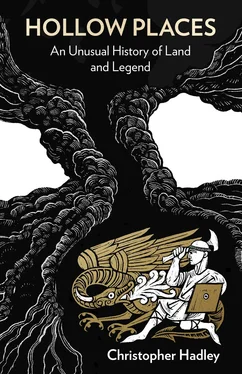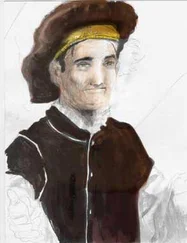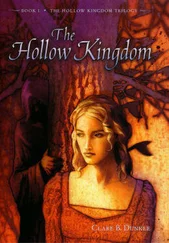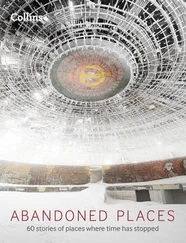The way of life for those in the English countryside was changing more rapidly than at any time since the end of the Middle Ages; old beliefs and stories were disappearing as people turned their backs on the fields. The populations of cities like Manchester and Liverpool doubled in the first thirty years of the nineteenth century as labourers left the countryside in search of work. London saw its population increase by over 50 per cent to 1.6 million. This in a country of just fifteen million people. The first railway opened in September 1830 and was the prelude to the laying of 1,000 miles of iron and the synchronisation of clocks to the railway timetables before mid-century. Time itself was changing. The world was changing. Agricultural labourers were living in a countryside that had been pulled out from under their feet.
The agricultural revolution had changed everything. Customary rights of ordinary people were forgotten, enclosure meant they had nowhere to pasture their livestock, nowhere to collect wood or furze. The woods had been fenced for game by the new landlords from London, who were heedless of those customs that had been honoured time out of mind. Customs were replaced by laws.
It is for these new game laws that the social historians John and Barbara Hammond reserve their greatest ire in their classic The Village Labourer . The Laws of England that had shorn people of their rights and replaced their wages with charity, now threatened them with the gallows if they failed to resist the urge to vary their diet of roots by bagging a pheasant for the table. It is undeniable that, like William Cobbett, the Hammonds were purveyors of that particular style of the picturesque we might call the you-don’t-know-you’re-born school of history. Many historians would argue that things weren’t as bad as they claimed, and that enclosure was an essential component of the agricultural revolution that ultimately brought better standards of living to all. Yet it is telling that the man who was the high priest of agricultural progress, the great champion of enclosure, Arthur Young, had second thoughts in later life: he thought the human cost had been too high.
The SwingRiots that began in Kent in the summer of 1830 were as much about resisting change to a way of life as about money. Captain Swing was the name signed to letters sent to farmers and landowners across southern England, threatening arson, machine breaking and murder. They went hand-in-hand with a series of uprisings starting in Kent in the autumn of 1830. Barns and hayricks were burned, the new threshing machines – which ‘stole’ winter work from labourers – were smashed, and unpopular overseers and parsons hauled from parishes in dung carts. The agricultural labourers were demanding higher wages, reduced rents and lower tithes (so the farmers could afford to pay the wages). But it was not just about poverty. One of the complaints of a mob at Walden in Buckinghamshire during the Swing Riots was that buns used to be thrown from the church steeple and beer given away in the churchyard on Bun Day. They wanted the customs continued, but the parson refused. Traditions and customs and rights were ignored. The Furneux Pelham overseers accounts once contained the item ‘paid for ringing church bell for gleaners’. But gleaning – the right to pick up dropped corn during harvest – was being curtailed.
In 1834 there was a total overhaul of the Poor Laws, which would now be administered by Boards of Guardians in the big towns. Change was needed, but at the time it must have seemed like another of the links between a person, the place he lived, and the rights he had in that place, were being destroyed.
Belonging had mattered. Keith Snelllooked at inscriptions on 16,000 gravestones in eighty-seven burial grounds to chart the use of the phrase ‘of this parish’ as in ‘To the memory of Mr James Smith late of this parish who departed this life 5th March 1830 aged 63’ and ‘Ellen, beloved wife of Thomas Tinworth of this parish died June 2nd 1888 aged 64 yrs’ – both in Brent Pelham churchyard. People had been proud of belonging, but by the 1870s examples became ever rarer.
Jacqueline Simpson has written that dragon legends ‘foster the community’s awareness of and pride in its own identity, its conviction that it is in some respect unusual, or even unique. That the lord of the manor should be descended from a dragon-slayer, that a dragon should once have roamed these very fields, or, best of all, that an ordinary lad from this very village should have outwitted and killed such a monster – these are claims to fame which any neighbouring community would be bound to envy.’
Those men did not only have a dragon legend to be proud of, they had a dragon-slayer in their village church and an ancient coffin lid to mark his resting place. Little wonder they thought first of dragons when they stared down into that great hollow in the earth.
Part II
Stone
Somewhere, perhaps, in the spaces between the picturesand the objects … lies a monument true to both us and the past.
—Mike Pitts in Making History: Antiquaries in Britain 1707–2007
Little is known of Mr John Morice of Upper Gower Street, London, other than the fact that in the 1830s he contracted a severe case of grangeritis : a condition coined by Holbrook Jacksonin his Anatomy of Bibliomania to describe a ‘contagious and delirious mania endangering many books’.
Jackson was poking fun at the practice of grangerising or extra-illustrating books by re-binding them with pictures, often ruthlessly chopped out of other books. It was popularised by the followers of James Granger, a late eighteenth-century print collector and author. Although Granger did not paste his own vast collection of prints into published books, countless grangerites had theirs bound into his three-volume Biographical History (a catalogue of historical portraits from the reign of Egbert the Great to the Glorious Revolution). Granger’s surname became a verb: the first edition of the OED defined grangerise as ‘To illustrate (a book) by the addition of prints, engravings, etc., especially such as have been cut out of other books.’ And some of the most notorious cases of grangeritis involved grangerised ‘Grangers’, including one that expanded the original three volumes into a shelf-full of thirty-six, each as fat as the binding would allow.
Other popular titles to inflate were county histories, and it is one of these that was the cause of Mr John Morice’s affliction: Robert Clutterbuck’s recently published History and Antiquities of the County of Hertford. In the 1830s, Morice developed such an affinity for the History that he expanded its three volumes to ten, adding over 2,500 illustrations. The result would become known as the Knowsley Clutterbuck (after Knowsley Hall, seat of the Stanleys, earls of Derby who owned it for many years) and has been called the most sumptuous extra-illustrated county history ever conceived.
The chances that anonymous Mr Morice had played a bit part in the long history of Piers Shonks’ tomb were good because many of the illustrations were said to be original. When the Earl of Derby bought the volumes for 800 guineas in the late nineteenth century, the sales catalogue boasted of over 1,000 original landscapes, architectural views and portraits in neutral tints and watercolours, and 1,400 beautifully emblazoned coats of arms. A mere 550 additional engravings were acquired from other books. And this in a book that originally had only fifty-four pictures.
Among the best additions were those made in the 1830s by John Buckler and two of his sons, who appear to have landed their dream commission. The Bucklers were successful architects, but painting antiquities was their true vocation. Why draw new buildings when there were so many fine churches and manor houses to visit and preserve in ink? Reflecting on his career in 1849, John Buckler Snr wrote: ‘To build, repair, or survey warehouses and sash-windowed dwellings, however profitable, was so much less to my taste than perspective drawing with such subjects before me as cathedrals, abbeys and ancient parish churches, that I never made any effort to increase the number of my employments as an architect.’
Читать дальше












